Gnats are small insects that are often spotted flying in large groups. These pesky bugs always seem to arrive at the worst time in summer, buzzing around a person’s ear on a hot, sticky afternoon or hovering near the food tables at a barbeque. Gnats are not a monolith, though. Several different types of gnats exist across a variety of species. Learn about the most common gnats that you are bound to encounter this summer and see what you can do about them!
What Are Gnats?
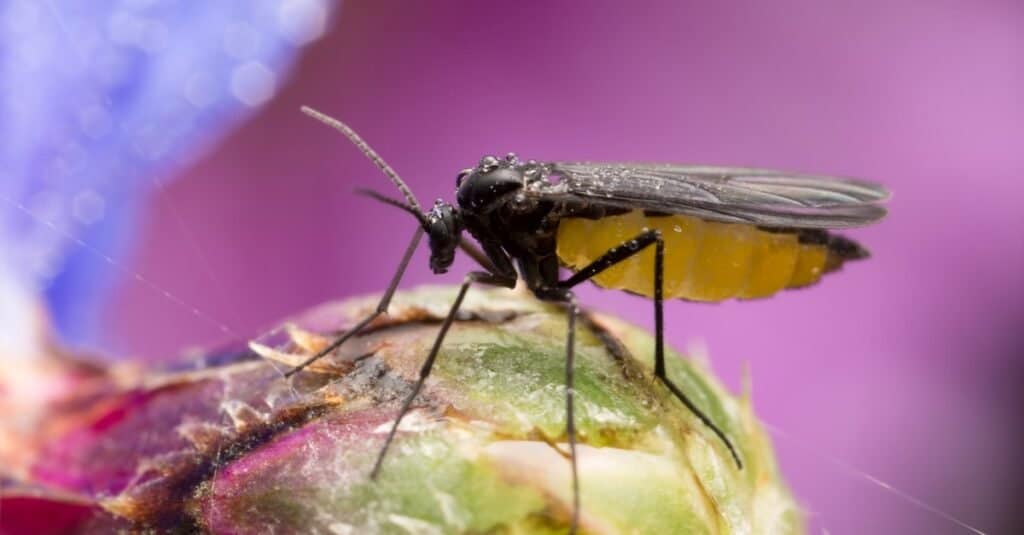
Gnats are very small insects that can cause annoyance or direct harm to people and animals.
©Henrik Larsson/Shutterstock.com
Gnats are exceedingly small pests. They usually measure between 0.25 and 1.2 inches in length. All gnats are insects, but the term ‘gnat’ has a somewhat broad meaning. The term is a colloquialism used to refer to a variety of different critters. People often call any small, unidentifiable flying insect a gnat.
Yet, the term gnat can be specifically applied. All gnats are members of the Diptera order of insects. This phylogenetic order refers to true flies. True flies have a single pair of functional wings, even though they do have a vestigial pair of secondary wings called halteres that are not used functionally for flight.
Within this order are flies, midges, no-see-ums, and mosquitoes. Over 120,000 species of true flies exist, and thousands of kinds of gnats exist. Gnats come from a suborder of Diptera called Nematocera, but not all creatures within that suborder are gnats, either. After all, crane flies and mosquitoes are distinct creatures that belong to Nematocera.
No consensus exists on what makes something a gnat. Some scientists believe that only non-biting members of the suborder, like wood gnats, should be called gnats while biting should be classified differently. Yet, for our purposes, we’re going to include both biting and non-biting varieties of insects.
Can Gnats Harm People?
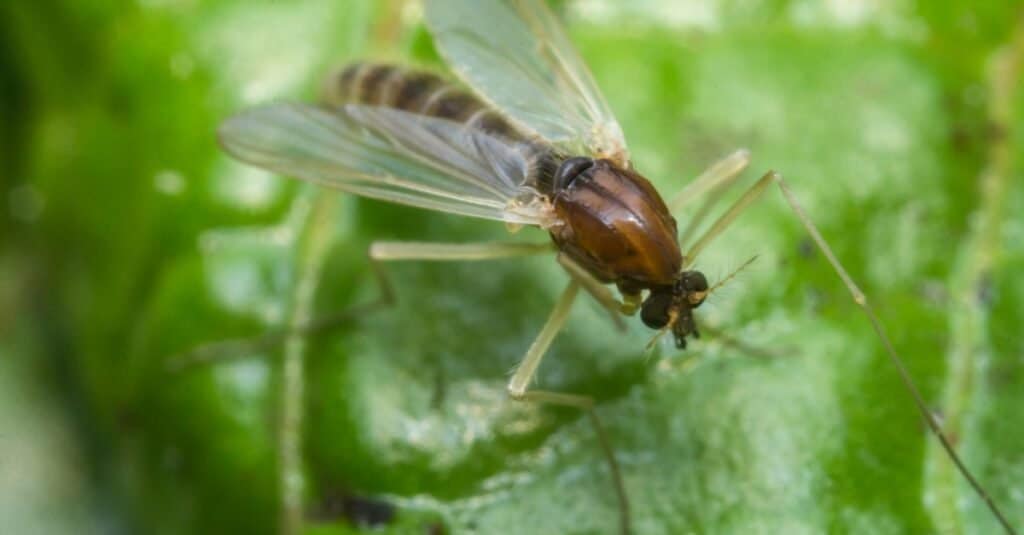
Some species can bite humans and cause allergic reactions.
©Ezume Images/Shutterstock.com
Yes, gnats can harm people. Some of these insects can annoy humans by buzzing in their eyes and around their faces while others can harm people by biting them. Gnat bites are not that serious in the sense that they can cause significant pain or damage.
Still, gnat bites typically result in small, red, itchy bumps on a person’s skin. Some people are allergic to gnat bites, and they will be more uncomfortable and have a greater number of symptoms including fluid-filled blisters, pain, and swelling. Fortunately, these insects are not long-lived, only surviving for about a week. Yet, they can inflict pain and aggravation upon humans while they live.
The 5 Different Types of Gnats You’ll See This Summer
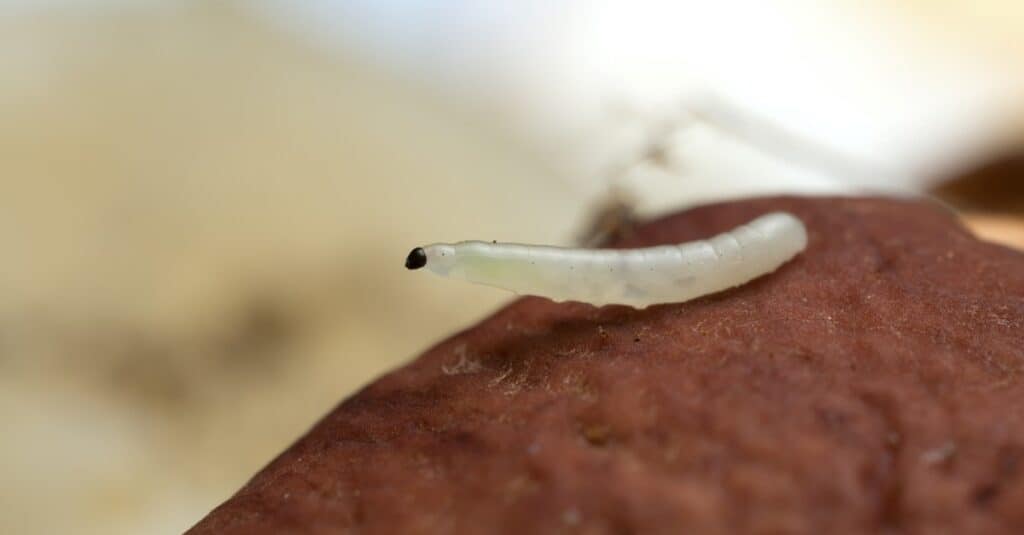
Gnat larvae are a sure sign that the flying insects will soon appear in an area.
©Henrik Larsson/Shutterstock.com
Thousands of species of gnats live around the world, and several hundred species of gnats live in North America alone. Without lumping in fruit flies and drain flies, we’re going to identify some of the most common types of gnats you’ll see this summer.
Some of these insects are biting and others are non-biting, but they can all be annoying pests. Take a look at a few of the most common gnats that a person will encounter throughout the summer.
1. Window Gnats
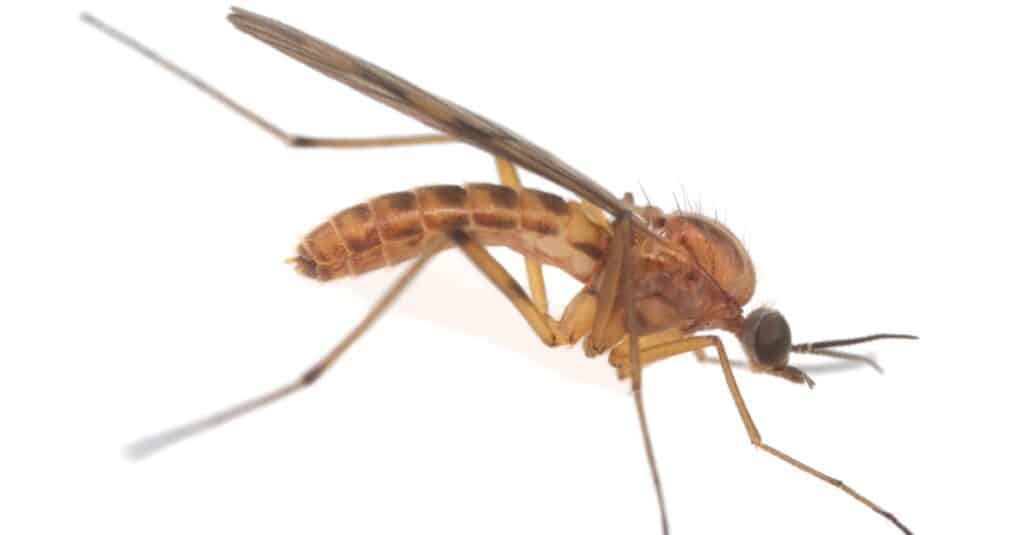
Window gnats are also called wood gnats.
©Henrik Larsson/Shutterstock.com
| Group | Size |
|---|---|
| Family Anisopodidae | 0.03 to 0.5 inches |
Window gnats are members of the family Anisopodidae, and one of the most common species encountered is Sylvicola fenestralis. These gnats often lay their eggs in a variety of moist areas within a home. They are also called wood gnats. Over 154 species of window gnats exist today. They often feed on decaying vegetation, and they’re commonly found in homes in warm weather.
2. Dark-Winged Fungus Gnats
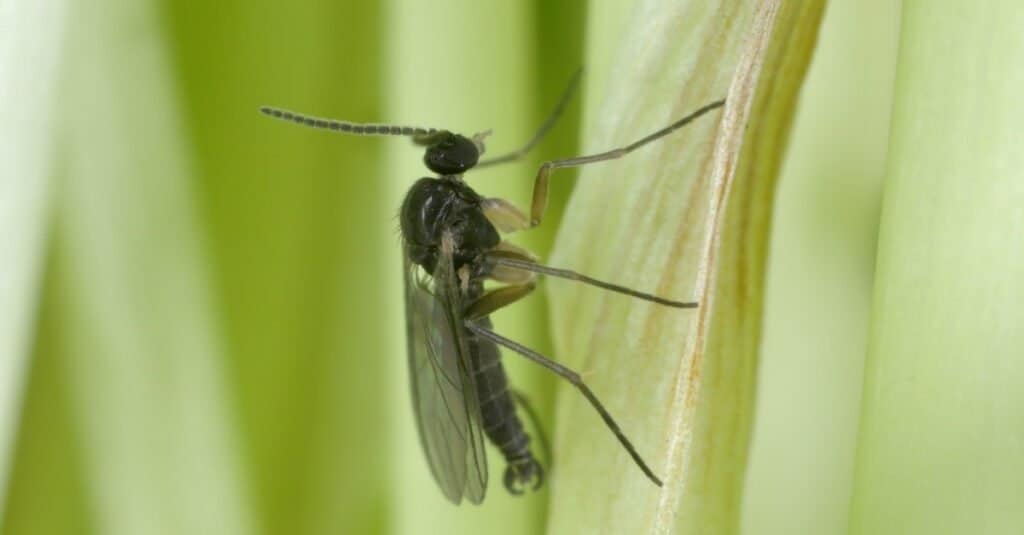
Dark-winged fungus gnat, Sciaridae on a plant. These are common pests of ornamental potted plants in homes.
©iStock.com/Tomasz Klejdysz
| Group | Size |
|---|---|
| Family Sciaridae | About 0.125 to 0.5 inches |
Many different types of gnats are members of the Sciaridae family of insects. Humans have identified over 1,700 species, and thousands more could be discovered! Dark-winged fungus gnats are very small, measuring about an eighth of an inch to half an inch as adults. These gnats are nuisances when fully grown, but they won’t bite you.
However, their larvae will feed on plant roots, especially indoor plants. That can stunt plant growth and cause them to wilt and die.
3. Eye Gnats
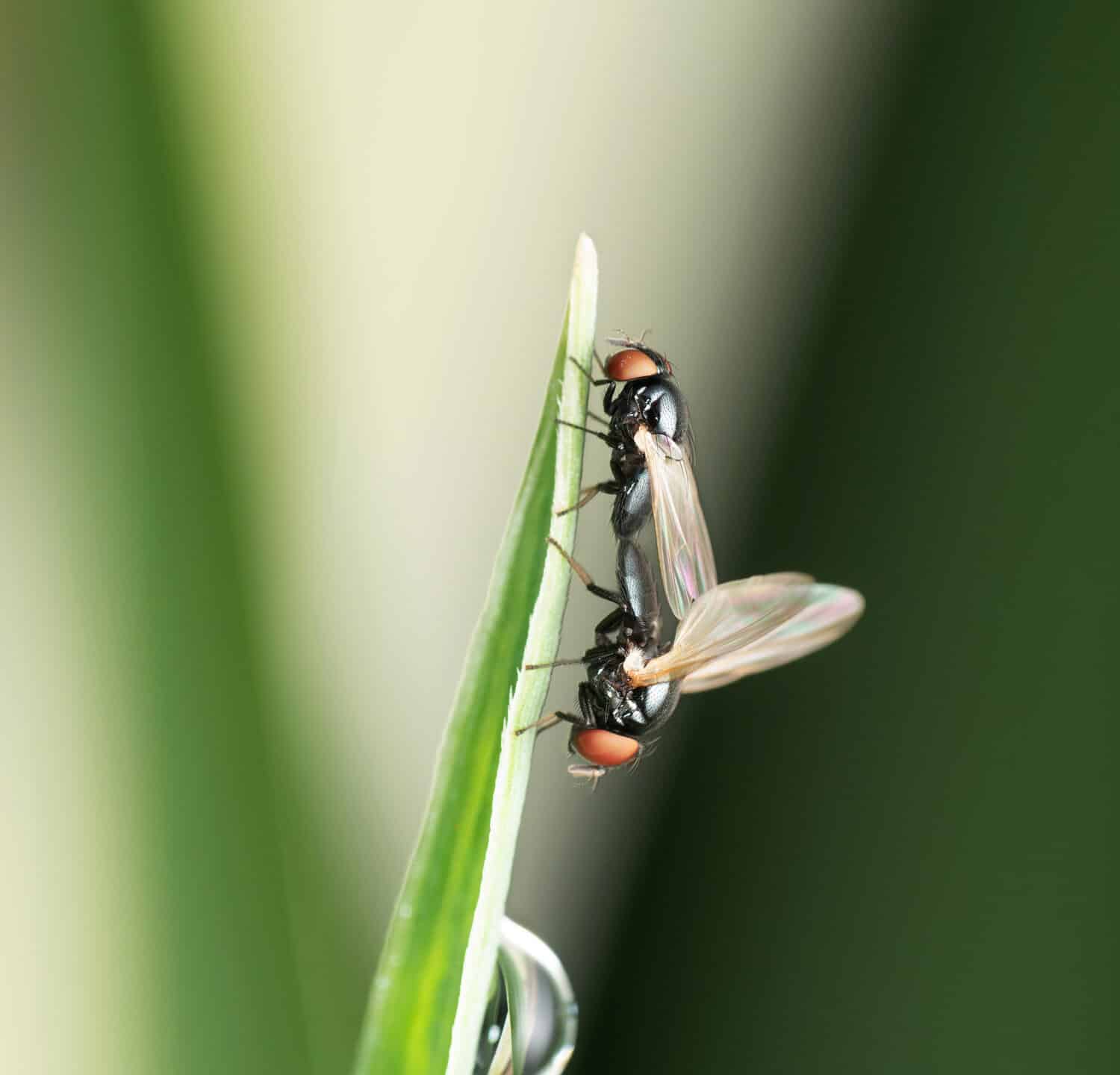
Eye gnats will go after a human’s eyes and wounds.
©RealityImages/Shutterstock.com
| Group | Size |
|---|---|
| Genus Liohippelates | About 0.05 inches |
Eye gnats from the Liohippelates genus are small, annoying gnats that are often black or gray with yellow or orange legs. These gnats can cause harm to humans, either by sheer, unrelenting annoyance or the spread of disease.
As their name suggests, eye gnats are often attracted to the secretions of an animal’s eyes along with sweat, blood, or pus. That means they will keep going after someone’s eyes, open wounds, or other bodily secretions to feed. Even though they don’t bite humans, they can still transmit diseases like conjunctivitis.
4. Gall Gnats

Gall gnats feed on plant tissue making them a significant pest.
©thatmacroguy/Shutterstock.com
| Group | Size |
|---|---|
| Family Cecidomyiidae | 0.07 to 0.11 inches |
Gall gnats are also called gall midges, so some people may not consider them gnats at all. However, they are certainly damaging, annoying, small flies. They measure less than a tenth of an inch in most cases. They’re not going to seek out a person’s eye fluids, but they will destroy crops.
These insects feed on plant tissue, making them a significant pest. Various species in this family destroy plants like potatoes, yams, garlic, rice, wheat, and more. Still, given that some of the species prey on plant pests, like aphids, members of the Cecidomyiidae family are used as a biological control method in parts of the United States.
5. Buffalo Gnats
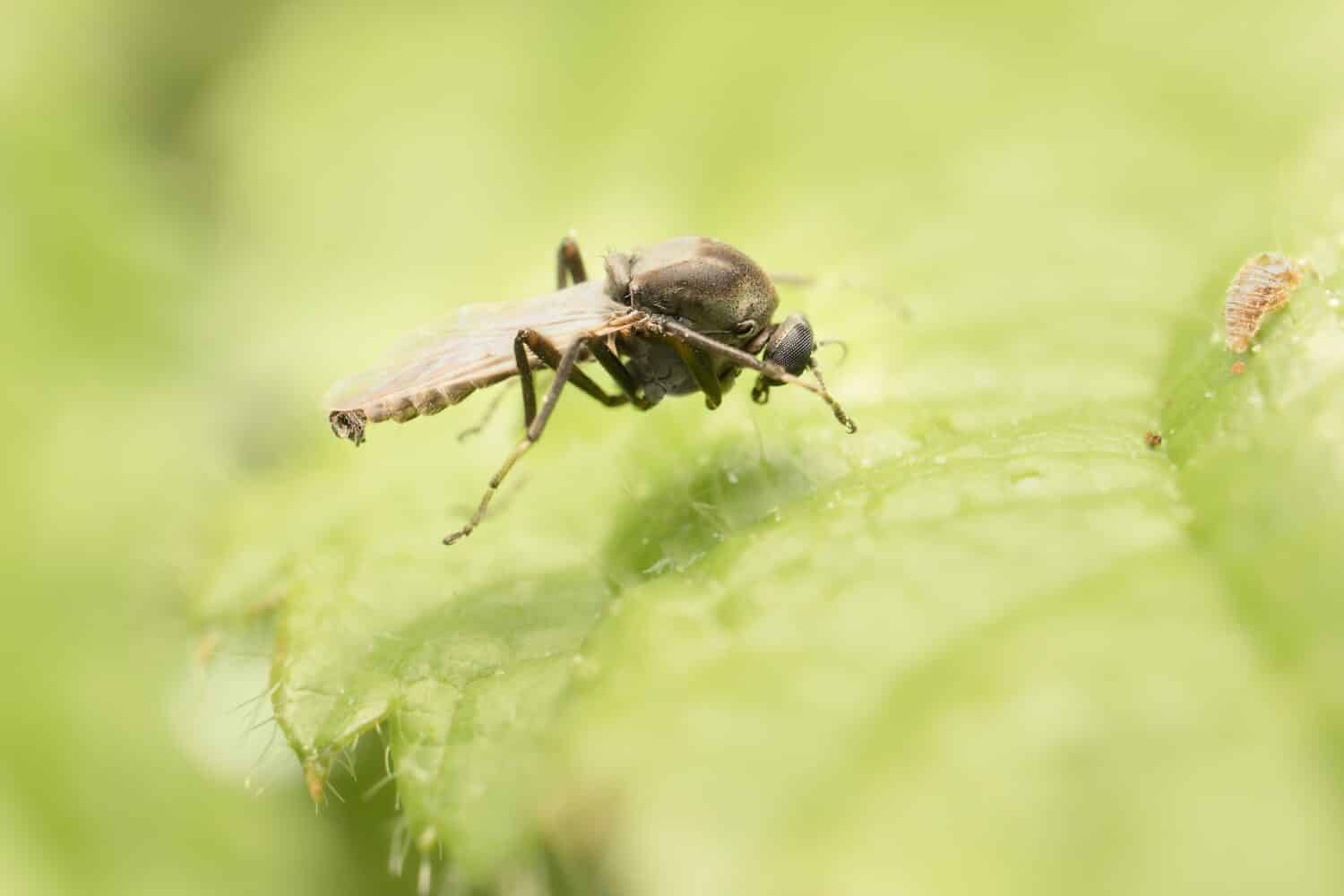
Buffalo
gnats are harmful to humans and animals.
©Tomas Vacek/Shutterstock.com
| Group | Size |
|---|---|
| Family Simuliidae | About 0.125 inches |
Buffalo gnats are also known as black flies, small hump-backed insects that can bite. They appear in the late spring and early summer, and they swarm and feed on all sorts of mammals, including humans. Typically, females are more likely to bite since they need blood for ovarian development.
These bites can cause pain, swelling, and red marks. Buffalo gnat bites may become infected or even cause an allergic reaction in animals and people. Many different types of gnats exist, and they tend to appear in late spring and early summer. These insects can be simply annoying, or they can cause true harm by killing plants, harming animals, and even feeding on human blood. If you have a gnat infestation brewing, it’s best to learn how to get rid of gnats quickly or to call a professional pest control company to have them deal with the infestation
Thank you for reading! Have some feedback for us? Contact the AZ Animals editorial team.








